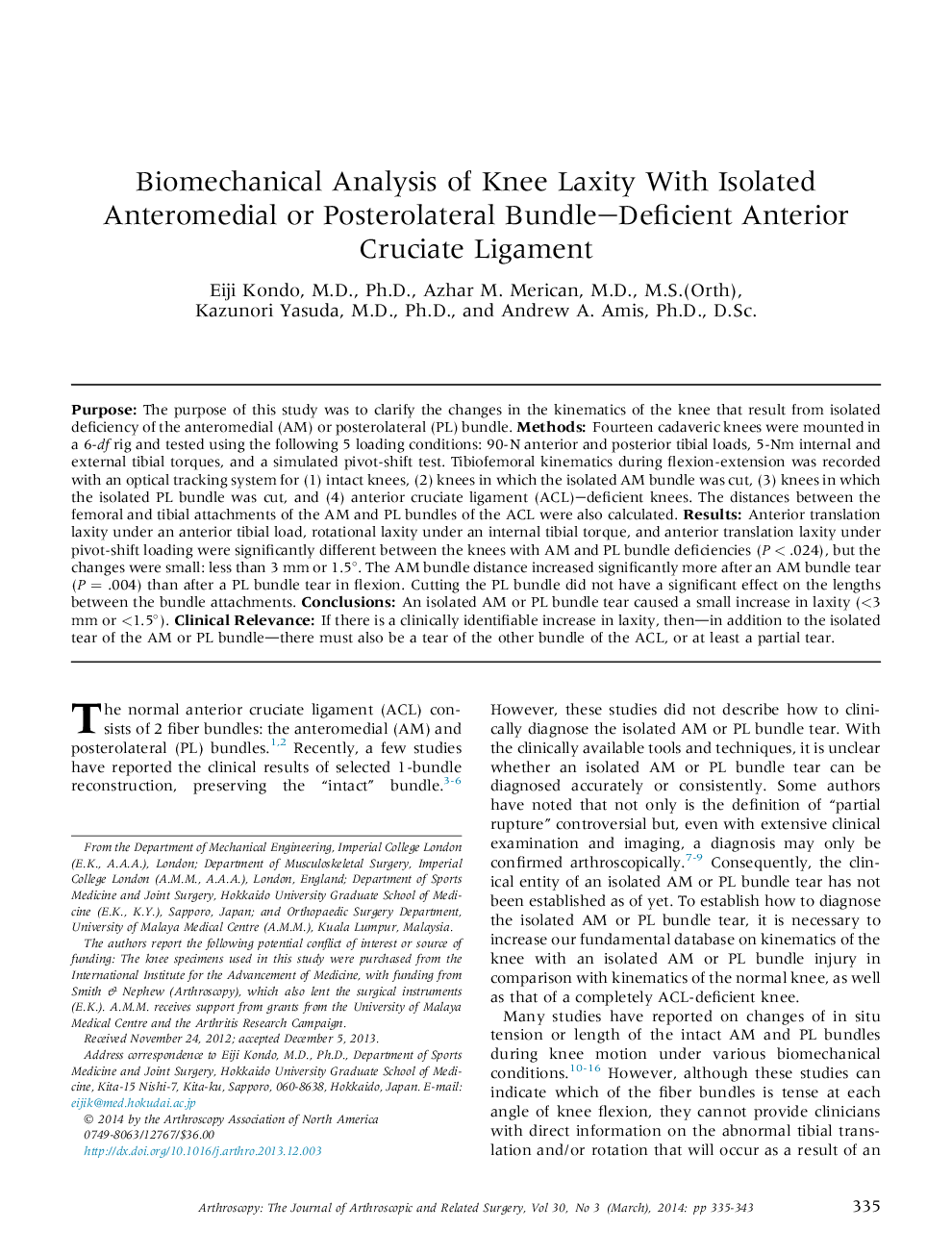| Article ID | Journal | Published Year | Pages | File Type |
|---|---|---|---|---|
| 4042796 | Arthroscopy: The Journal of Arthroscopic & Related Surgery | 2014 | 9 Pages |
PurposeThe purpose of this study was to clarify the changes in the kinematics of the knee that result from isolated deficiency of the anteromedial (AM) or posterolateral (PL) bundle.MethodsFourteen cadaveric knees were mounted in a 6-df rig and tested using the following 5 loading conditions: 90-N anterior and posterior tibial loads, 5-Nm internal and external tibial torques, and a simulated pivot-shift test. Tibiofemoral kinematics during flexion-extension was recorded with an optical tracking system for (1) intact knees, (2) knees in which the isolated AM bundle was cut, (3) knees in which the isolated PL bundle was cut, and (4) anterior cruciate ligament (ACL)–deficient knees. The distances between the femoral and tibial attachments of the AM and PL bundles of the ACL were also calculated.ResultsAnterior translation laxity under an anterior tibial load, rotational laxity under an internal tibial torque, and anterior translation laxity under pivot-shift loading were significantly different between the knees with AM and PL bundle deficiencies (P < .024), but the changes were small: less than 3 mm or 1.5°. The AM bundle distance increased significantly more after an AM bundle tear (P = .004) than after a PL bundle tear in flexion. Cutting the PL bundle did not have a significant effect on the lengths between the bundle attachments.ConclusionsAn isolated AM or PL bundle tear caused a small increase in laxity (<3 mm or <1.5°).Clinical RelevanceIf there is a clinically identifiable increase in laxity, then—in addition to the isolated tear of the AM or PL bundle—there must also be a tear of the other bundle of the ACL, or at least a partial tear.
